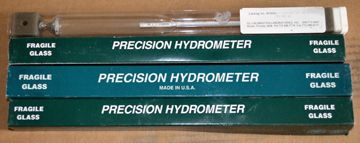CRMoore, you posed a question on the last page about fines from the catalyst.. In a reactor such as Asads the catalyst never leaves the reactor. In mine the catalyst is in the reflux column and any dust that detaches itself from the blocks should make its way downwards back into the reactor.
I suppose its possible for dust or fines to be carried by the gas flow into the condensers although it has never happened with my outfit.
Any oil produced by this process should be filtered to 5 micron before use anyway which will take care of any fines should they occur.
Asad, inspired by your example I decided to try out an experiment today. I had just loaded my reflux column with my latest catalyst. I filled the reactor with waste plastic, mostly PE and at the last moment I put in 5% bentonite clay on top of the plastic. So this was using both gas phase and liquid phase catalyst.
I immediately noticed a difference. Normally it takes about 4 litres before my catalyst fully activates. The first 4 litres are cloudy and darken overnight and then a stable, lemon coloured fuel flows after that. This time within 1/2 a litre the fuel had cleared and lovely sparkling fuel flowed for the whole batch. I know from experience that in my reactor bentonite alone would not have achieved that rapid result, either in liquid or gas phase but the combination really worked.
I have just invested in a ubblehode viscometer which is a very useful tool if a bit fragile and expensive. My fuel taken from a single condenser has exactly the same viscosity as kerosene which was what I was hoping for. Viscosity is a very important quality in an oil meant for use in a heating burner.
I also found that a blend of 30% my plastic derived fuel and 70% biodiesel produces a mixture with exactly the same viscosity as ordinary diesel. I shall be trying some in my car over the next few days.
Beyond Biodiesel, I dont want to be rude, and I think everyone here on the forum will agree that we have been very patient, but please stop talking rubbish. If you believe that catalysts do not contribute significantly to the cracking of plastics to fuel then do it yourself and show us where we are going wrong, until then just confine your opinions to what you know something about.
I suppose its possible for dust or fines to be carried by the gas flow into the condensers although it has never happened with my outfit.
Any oil produced by this process should be filtered to 5 micron before use anyway which will take care of any fines should they occur.
Asad, inspired by your example I decided to try out an experiment today. I had just loaded my reflux column with my latest catalyst. I filled the reactor with waste plastic, mostly PE and at the last moment I put in 5% bentonite clay on top of the plastic. So this was using both gas phase and liquid phase catalyst.
I immediately noticed a difference. Normally it takes about 4 litres before my catalyst fully activates. The first 4 litres are cloudy and darken overnight and then a stable, lemon coloured fuel flows after that. This time within 1/2 a litre the fuel had cleared and lovely sparkling fuel flowed for the whole batch. I know from experience that in my reactor bentonite alone would not have achieved that rapid result, either in liquid or gas phase but the combination really worked.
I have just invested in a ubblehode viscometer which is a very useful tool if a bit fragile and expensive. My fuel taken from a single condenser has exactly the same viscosity as kerosene which was what I was hoping for. Viscosity is a very important quality in an oil meant for use in a heating burner.
I also found that a blend of 30% my plastic derived fuel and 70% biodiesel produces a mixture with exactly the same viscosity as ordinary diesel. I shall be trying some in my car over the next few days.
Beyond Biodiesel, I dont want to be rude, and I think everyone here on the forum will agree that we have been very patient, but please stop talking rubbish. If you believe that catalysts do not contribute significantly to the cracking of plastics to fuel then do it yourself and show us where we are going wrong, until then just confine your opinions to what you know something about.







Comment